Resident Crews of the International Space Station (ISS)
![]()
ISS: Expedition 73 |
 |
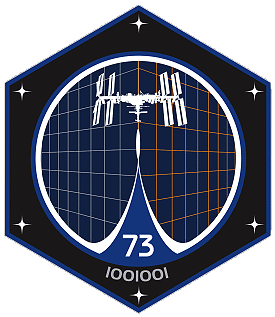 |
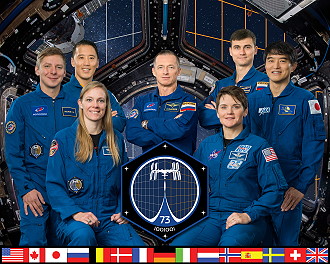 |
 |
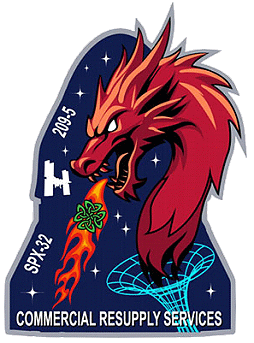 |
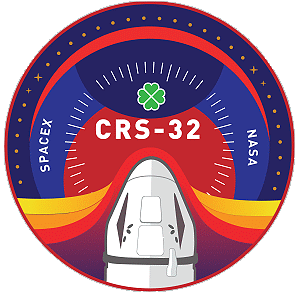 |
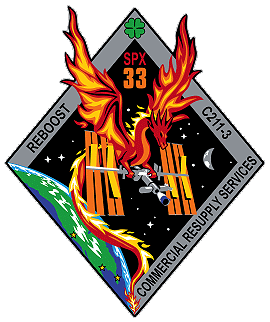 |
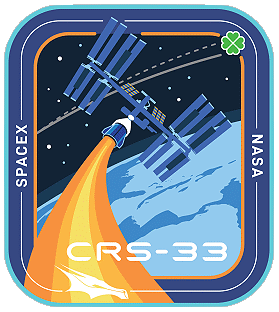 |
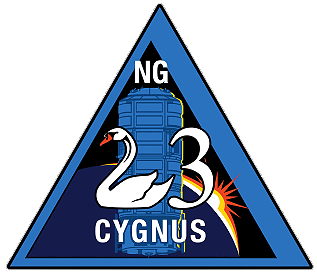 |
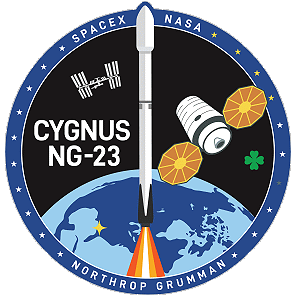 |
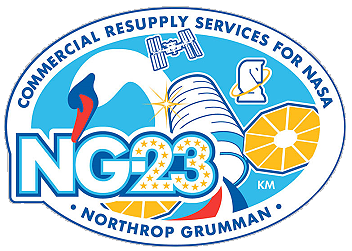 |
![]()
Crew, launch- and landing data
| No. | Nation | Surname | Given names | Position | Spacecraft (launch) |
Launch date |
Launch time |
Spacecraft (landing) |
Landing date |
Landing time |
Mission duration |
Orbits |
| 1 | Onishi | Takuya | ISS-CDR | SpaceX Crew-10 | 14.03.2025 | 23:03:48 UTC | SpaceX Crew-10 | 09.08.2025 | 15:33:40 UTC | 147d 16h 29m 52s | 2368 | |
| 2 | McClain | Anne Charlotte "Annimal" | Flight Engineer | SpaceX Crew-10 | 14.03.2025 | 23:03:48 UTC | SpaceX Crew-10 | 09.08.2025 | 15:33:40 UTC | 147d 16h 29m 52s | 2368 | |
| 3 | Ayers | Nichole Stilwell “Vapor” | Flight Engineer | SpaceX Crew-10 | 14.03.2025 | 23:03:48 UTC | SpaceX Crew-10 | 09.08.2025 | 15:33:40 UTC | 147d 16h 29m 52s | 2368 | |
| 4 | Peskov | Kirill Aleksandrovich | Flight Engineer | SpaceX Crew-10 | 14.03.2025 | 23:03:48 UTC | SpaceX Crew-10 | 09.08.2025 | 15:33:40 UTC | 147d 16h 29m 52s | 2368 | |
| 5 | Ryzhikov | Sergei Nikolaevich | ISS-CDR * | Soyuz MS-27 | 08.04.2025 | 05:47:15.309 UTC | Soyuz MS-27 | (09.12.2025) | UTC | |||
| 6 | Zubritsky | Aleksei Vitalyevich | Flight Engineer | Soyuz MS-27 | 08.04.2025 | 05:47:15.309 UTC | Soyuz MS-27 | (09.12.2025) | UTC | |||
| 7 | Kim | Jonathan Yong "Jonny" | Flight Engineer | Soyuz MS-27 | 08.04.2025 | 05:47:15.309 UTC | Soyuz MS-27 | (09.12.2025) | UTC | |||
| 8 | Cardman | Zena Maria | Flight Engineer | SpaceX Crew-11 | 01.08.2025 | 15:43:42 UTC | SpaceX Crew-11 | (??.01.2026) | UTC | |||
| 9 | Fincke | Edward Michael "Mike" | Flight Engineer | SpaceX Crew-11 | 01.08.2025 | 15:43:42 UTC | SpaceX Crew-11 | (??.01.2026) | UTC | |||
| 10 | Yui | Kimiya | Flight Engineer | SpaceX Crew-11 | 01.08.2025 | 15:43:42 UTC | SpaceX Crew-11 | (??.01.2026) | UTC | |||
| 11 | Platonov | Oleg Vladimirovich | Flight Engineer | SpaceX Crew-11 | 01.08.2025 | 15:43:42 UTC | SpaceX Crew-11 | (??.01.2026) | UTC | |||
| 12 | Kud-Sverchkov | Sergei Vladimirovich | Flight Engineer | Soyuz MS-28 | 27.11.2025 | UTC | Soyuz MS-28 | (??.07.2026) | UTC | |||
| 13 | Mikayev | Sergei Nikolayevich | Flight Engineer | Soyuz MS-28 | 27.11.2025 | UTC | Soyuz MS-28 | (??.07.2026) | UTC | |||
| 14 | Williams | Christopher Leigh | Flight Engineer | Soyuz MS-28 | 27.11.2025 | UTC | Soyuz MS-28 | (??.07.2026) | UTC |
 |
Expedition Report
|
ISS
Expedition 73 began with undocking of
Soyuz
MS-26 on April 19, 2025. On April 21, 2025 at 08:15 UTC unmanned freighter Dragon SpX-32 or CRS-32 filled with nearly 6,400 pounds (2,900 kilograms) of supplies, a SpaceX Dragon spacecraft on a Falcon 9 rocket lifted off from Launch Complex 39-A at NASA's Kennedy Space Center in Florida. Along with food and essential equipment for the crew, Dragon is delivering a variety of experiments, including a demonstration of refined maneuvers for free-floating robots. Dragon also carries an enhanced air quality monitoring system that could protect crew members on exploration missions to the Moon and Mars, and two atomic clocks to examine fundamental physics concepts, such as relativity, and test worldwide synchronization of precision timepieces. The Dragon spacecraft is scheduled to remain at the space station until May 2025, when it will depart and return to Earth with research and cargo, splashing down off the coast of California. SpaceX SpX-32 or CRS-32 Dragon spacecraft docked to the space-facing port of the International Space Station's Harmony module on April 22, 2025 at 12:40 UTC. On May 01, 2025 Anne McClain and Nichole Ayers performed a spacewalk (5h 44m). The NASA duo installed a modification kit on the port side of the station's truss structure enabling the future installation of the orbiting lab's seventh iROSA (International Space Station Roll Out Solar Arrays). They also relocated an antenna that communicates with approaching and departing commercial crew and cargo spacecraft. The Dragon SpX-32 or CRS-32 spacecraft undocked from the zenith, or space-facing, port of the station's Harmony module on May 23, 2025 at 16:05 UTC and fired its thrusters to move a safe distance away from the station under command by SpaceX's Mission Control in Hawthorne, California. After re-entering Earth's atmosphere, the spacecraft splashed down on May 25, 2025 off the coast of California. Some of the scientific hardware and samples Dragon returned to Earth include MISSE-20 (Multipurpose International Space Station Experiment), which exposed various materials to space, including radiation shielding and detection materials, solar sails and reflective coatings, ceramic composites for reentry spacecraft studies, and resins for potential use in heat shields. Samples were retrieved on the exterior of the station and can improve knowledge of how these materials respond to ultraviolet radiation, atomic oxygen, charged particles, thermal cycling, and other factors. Additionally, Astrobee-REACCH (Responsive Engaging Arms for Captive Care and Handling) is returning to Earth after successfully demonstrating grasping and relocating capabilities on the space station. The REACCH demonstration used Astrobee robots to capture space objects of different geometries or surface materials using tentacle-like arms and adhesive pads. Testing a way to safely capture and relocate debris and other objects in orbit could help address end-of-life satellite servicing, orbit change maneuvers, and orbital debris removal. These capabilities maximize satellite lifespan and protect satellites and spacecraft in low Earth orbit that provide services to people on Earth. Books from the Story Time from Space project also returned. Crew members aboard the space station read five science, technology, engineering, and mathematics-related children's books in orbit and videotaped themselves completing science experiments. Video and data collected during the readings and demonstrations were downlinked to Earth and were posted in a video library with accompanying educational materials. Hardware and data from a one-year technology demonstration called OPTICA (Onboard Programmable Technology for Image Compression and Analysis) also returned to Earth. The OPTICA technology was designed to advance transmission of real-time, ultra-high-resolution hyperspectral imagery from space to Earth, and it provided valuable insights for data compression and processing that could reduce the bandwidth required for communication, lowering the cost of acquiring data from space-based imaging systems without reducing the volume of data. This technology also could improve services, such as disaster response, that rely on Earth observations. Finally, space suit EMU No. 3009 was returned to Earth. The private space flight mission Ax-4 by Axiom Space with Peggy Whitson, Shubhanshu Shukla, Slawosz Uznanski-Wisniewski and Tibor Kapu docked to the ISS on 26.06.2025, 10:31:47 UTC . Unmanned freighter Progress MS-29 filled with 'junk' and used-up equipment undocked from Poisk module on July 01, 2025 at 18:43:28 UTC. The unmanned transporter re-entered the atmosphere a few hours later and burned up over the South Pacific. Progress MS-31 launched on July 03, 2025 at 19:32:40.257 UTC on a Soyuz-2.1a rocket from the Baikonur cosmodrome. Progress MS-31 is scheduled to carry 2,625 kg of cargo to the International Space Station, including 1,205 kg of dry cargo for the crew of the 73rd long-duration expedition, 950 kg of fuel for refueling the station, 420 kg of drinking water for cosmonauts and 50 kg of nitrogen to replenish the ISS atmosphere. The craft is also carrying equipment for the Virtuall, Biodegradation, Fullerene, Biopolymer, Impulse and Mirage science experiments to the station. After a two-day, in-orbit journey to the station, the spacecraft docked autonomously to the space-facing port of the orbiting laboratory's Poisk module on July 05, 2025 at 21:25:45 UTC. The Progress MS-31 spacecraft will remain docked to the space station for approximately six months before departing for re-entry into Earth's atmosphere to dispose of trash loaded by the crew. On August 02, 2025 at 06:26:56 UTC Dragon SpaceX Crew-11 with Zena Cardman, Michael Fincke, Kimiya Yui and Oleg Platonov docked to the International Space Station. They became Flight Engineers of the Expedition 73. SpaceX Crew-10 undocked on August 08, 2025 at 22:15 UTC with Anne McClain, Nichole Ayers, Takuya Onishi and Kirill Peskov. They landed safely on August 09, 2025 at 15:33:40 UTC 50 km west of San Diego, California. On August 24, 2025 at 06:45 UTC unmanned freighter Dragon SpX-33 or CRS-33 filled with nearly 5,070 pounds (2,300 kilograms) of supplies, a SpaceX Dragon spacecraft on a Falcon 9 rocket lifted off from Launch Complex 39-A at NASA's Kennedy Space Center in Florida. Each resupply mission to the station delivers scientific investigations in the areas of biology and biotechnology, Earth and space science, physical sciences, and technology development and demonstrations. Cargo resupply from U.S. companies ensures a national capability to deliver scientific research to the space station, significantly increasing NASA's ability to conduct new investigations aboard humanity's laboratory in space. In addition to food, supplies, and equipment for the crew, Dragon will deliver several new experiments, including bone-forming stem cells for studying bone loss prevention and materials to 3D print medical implants that could advance treatments for nerve damage on Earth. Dragon also delivers bioprinted liver tissue to study blood vessel development in microgravity and supplies to 3D print metal cubes in space. Dragon docked autonomously about 11:05 UTC on August 25, 2025 to the forward port of the space station's Harmony module. The Dragon spacecraft is scheduled to remain at the space station until December 2025 when it will depart and return to Earth with research and cargo, splashing down in the Pacific Ocean off the coast of California. Ahead of the next spacecraft's arrival, the Progress MS-30 spacecraft undocked from the Zvezda Service Module on September 09, 2025 at 15:45:30 UTC. The unpiloted Roscosmos Progress MS-32 resupply spacecraft launched at 15:54:06.235 UTC on September 11, 2025 on a Soyuz rocket from the Baikonur Cosmodrome in Kazakhstan. After a two-day journey to the station, the spacecraft docked autonomously to the aft port of the station's Zvezda module at 17:23:19 UTC on September 13, 2025. The freighter delivered the Orlan-MKS No. 7 spacesuit for extravehicular activity to the International Space Station. This was reported by Roscosmos. The Progress MS-32 spacecraft will remain docked to the space station for approximately six months before departing for re-entry into Earth's atmosphere to dispose of trash loaded by the crew. A Northrop Grumman Cygnus spacecraft launched to the orbital laboratory on a SpaceX Falcon 9 rocket for NASA. The mission is known as NASA's Northrop Grumman Commercial Resupply Services 23, or Northrop Grumman CRS-23. Liftoff occurred September 14, 2025 at 22:11:49 UTC from Space Launch Complex 40 at Cape Canaveral Space Force Station in Florida. The first stage B1094-4 landed at LZ-2. NG-23 was named in honor of naval aviator and astronaut William "Willie" C. McCool. Filled with more than 11,000 pounds (4,980 kg) of supplies including materials to produce semiconductor crystals in space and equipment to develop improvements for cryogenic fuel tanks. The spacecraft also delivered a specialized UV light system to prevent the growth of microbe communities that form in water systems and supplies to produce pharmaceutical crystals that could treat cancer and other diseases. The mission is the debut the Cygnus XL spacecraft configuration, featuring a pressurized cargo module measuring 7.89 meters in length, with a payload capacity of 5,000 kilograms, an increase of 19.5%, and a pressurized cargo volume of 36 cubic metres, an increase of 15.5%. Cygnus XL was captured at 11:24 UTC on September 18, 2025 by the Canadarm2 robotic arm, which NASA astronaut Jonny Kim operated with assistance from NASA astronaut Zena Cardman. Following capture, the spacecraft was installed to the Unity module's Earth-facing port for cargo unloading. The spacecraft will remain at the space station for more than two months. |
EVA data
| Name | Start | End | Duration | Mission | Airlock | Suit | |
| EVA | McClain, Anne | 01.05.2025, 13:05 UTC | 01.05.2025, 18:49 UTC | 5h 44m | ISS-73 | ISS - Quest | EMU No. 3003 |
| EVA | Ayers, Nichole | 01.05.2025, 13:05 UTC | 01.05.2025, 18:49 UTC | 5h 44m | ISS-73 | ISS - Quest | EMU No. 3015 |
Photos
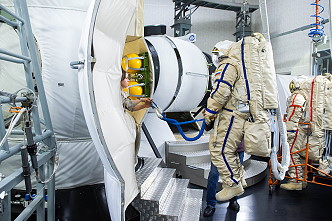 |
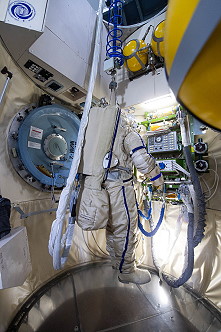 |
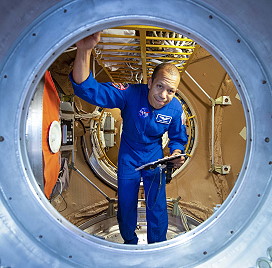 |
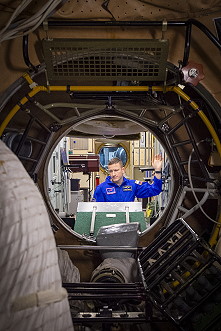 |
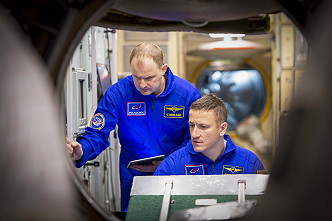 |
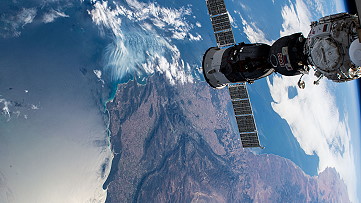 |
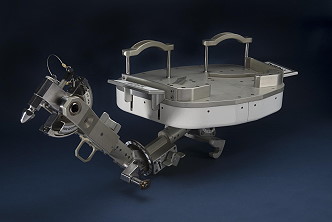 |
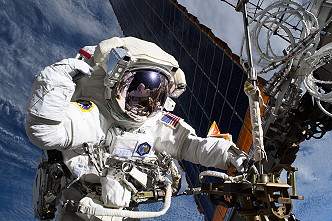 |
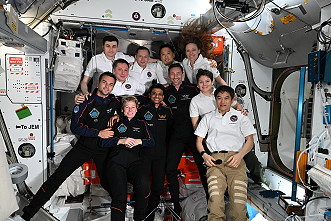 |
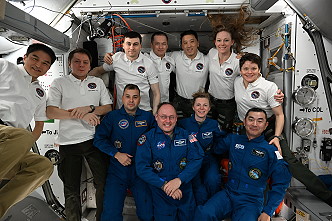 |
 |
 |
onboard photos |
|
more EVA photos |
|
Earth observation photos |
|
| © | 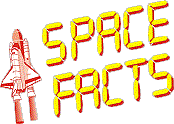 |
Last update on October 01, 2025.  |
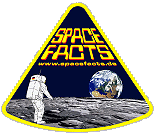 |